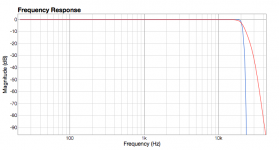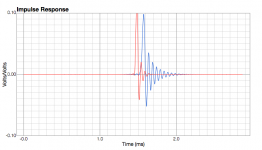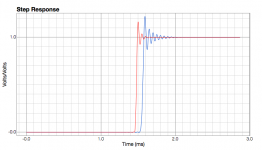Serial ports used to be simple and just worked.... Then the PC manufacturers started dropping them in new PCs and you now have to used crappy USB adapters with all their complications.... I'll recommend brand name adapters.
I have a short cable, I do not think that is the problem and gender does not fit either, its male to male.
I tried terminal screen, it works untill I want to connect, nothing again.
Should Il try a proven usb to serial adaptor, or are all adaptors with the PL2303TA chip the same and mine should work anyway?
I just had a look at its data sheet and its 3.3 Volts out (I measured again and I had 3.3v not 3.8v I misread it, sorry), so that is all I will have on the pin.
The PL2303TA allone does not provide the needed signal level. A RS232 driver is also needed.
I first tried with a serial adapter for a Arduino which had up to 5V output level. This did not work.
Then I used a this one http://www.amazon.de/Digitus-USB-Seriell-Adapter-schwarz/dp/B0030IT780 which has a real RS232 driver included and worked.http://www.ebay.de/itm/171007693115?_trksid=p2060778.m2749.l2649&ssPageName=STRK:MEBIDX:IT
Just in general, I have seen the aliasing products, it's not pretty and can't be a good thing..........................
As the final conversion rate for 44.1 kHz is 2.822 MHz then the reflected images are also pushed high.
In that case the filter could be extremely gentle. Even no filter could work as I suspect many amplifiers would have such bandwidth.
What am I missing here?

As the final conversion rate for 44.1 kHz is 2.822 MHz then the reflected images are also pushed high.
In that case the filter could be extremely gentle. Even no filter could work as I suspect many amplifiers would have such bandwidth.
What am I missing here?
Yes, that's not how it works.... You will get aliases all the way at every multpla at the sampling rate, unless you filter....
Is there several depth of upgrades with the commands via RS232 ? I.E. does the last maid by Paul or Pos will erase the one you link by Soren ? Linked also some ref of active usb/serie adaptors on the first page of the other thread.
In post #1672:
http://www.diyaudio.com/forums/vend...magnitude-24-bit-384-khz-168.html#post4221487
Maybe not clear enough, there can be only one filter file loaded.
Thanks.
Why would I think this would be on the SOEKRIS website?
For anyone who is interested, I've attached POS's 44.1 filter converted to .skr for upload to the DAC.
It's pretty interesting to compare the different filters. The ones I did are pretty basic but still sound reasonably good. POS's filter sounds great.
Anyway it might be time to start a Soekris R2R Filter Brewing thread
Tried the POS filter today, significant improvement to the default filter. No more grains in 44.1k material.
Thank you very much for posting it!
On my PC I am using PuTTY and ExtraPuTTY (for its XMODEM-1K capability).
I see that for the Mac you can get this version of PuTTY: Spackle | SourceForge.net
Perhaps you should give it a try.
ZTerm works. I've used it for over a decade, including with Soekris networking hardware which uses the same system as the DAM1021. Even with the modem strings, it will drop you into uManager if cabling correct and it is configured per my instructions.
Yet another filter
I've been having a play with creating something close to the Ayre MP Listening position filter described in their MP white paper.
I've used a similar method to POS in that the main filter is minimum-phase, but an additional linear-phase filter is used to control the cutoff slope.
As per the Ayre white paper this filter is -6dB at 22050hz, and -96dB at 44100hz. I'm sure this will give Søren the horrors, but I feel if it's good enough for Charles Hansen to include in a commercial product as the preferred setting it can't be all bad
I've included comparison with POS's filter (pos - blue, my "MixPhase1" filter - red).
Filter Response showing the slower roll-off, and earlier onset of filtering. It's about -1.2dB at 19kHz, so not as ruler flat as POS or stock filters.
IR showing 2, possibly 3 post-ringing cycles on the MP1. Not as good as the 1, possibly 2 cycles of the Ayre. Both POS's filter and my MP1 have a minimal amount of pre-ringing from the use of linear-phase filters.
Step response is similar story to the IR.
How does it sound? I like it, but them I'm biased (and possibly have tin ears).
zipped .skr with MixPhase1 at 44.1 position attached.
I've been having a play with creating something close to the Ayre MP Listening position filter described in their MP white paper.
I've used a similar method to POS in that the main filter is minimum-phase, but an additional linear-phase filter is used to control the cutoff slope.
As per the Ayre white paper this filter is -6dB at 22050hz, and -96dB at 44100hz. I'm sure this will give Søren the horrors, but I feel if it's good enough for Charles Hansen to include in a commercial product as the preferred setting it can't be all bad
I've included comparison with POS's filter (pos - blue, my "MixPhase1" filter - red).
Filter Response showing the slower roll-off, and earlier onset of filtering. It's about -1.2dB at 19kHz, so not as ruler flat as POS or stock filters.
IR showing 2, possibly 3 post-ringing cycles on the MP1. Not as good as the 1, possibly 2 cycles of the Ayre. Both POS's filter and my MP1 have a minimal amount of pre-ringing from the use of linear-phase filters.
Step response is similar story to the IR.
How does it sound? I like it, but them I'm biased (and possibly have tin ears).
zipped .skr with MixPhase1 at 44.1 position attached.
Attachments
Last edited:
I've been having a play with creating something close to the Ayre MP Listening position filter described in their MP white paper.
I've used a similar method to POS in that the main filter is minimum-phase, but an additional linear-phase filter is used to control the cutoff slope.
As per the Ayre white paper this filter is -6dB at 22050hz, and -96dB at 44100hz. I'm sure this will give Søren the horrors, but I feel if it's good enough for Charles Hansen to include in a commercial product as the preferred setting it can't be all bad
I've included comparison with POS's filter (pos - blue, my "MixPhase1" filter - red).
Filter Response showing the slower roll-off, and earlier onset of filtering. It's about -1.2dB at 19kHz, so not as ruler flat as POS or stock filters.
IR showing 2, possibly 3 post-ringing cycles on the MP1. Not as good as the 1, possibly 2 cycles of the Ayre. Both POS's filter and my MP1 have a minimal amount of pre-ringing from the use of linear-phase filters.
Step response is similar story to the IR.
How does it sound? I like it, but them I'm biased (and possibly have tin ears).
zipped .skr with MixPhase1 at 44.1 position attached.
I'm fine, you still have good attenuation where it matters, remember that no music have content at high levels at high frequencies, so you don't need to be 100 db down at 22 Khz.... The trick is to find out how attenuation you really need....
Btw, how to you generate those nice curves ? Would really prefer not to try all kind of software packages, has already too much loaded on my computer....
I'm fine, you still have good attenuation where it matters, remember that no music have content at high levels at high frequencies, so you don't need to be 100 db down at 22 Khz.... The trick is to find out how attenuation you really need....
Btw, how to you generate those nice curves ? Would really prefer not to try all kind of software packages, has already too much loaded on my computer....
Thanks Søren, glad it's within acceptable limits.
leehan sent me a link to a thread over at Computeraudiophile with some information about the Ayre MP curves. Mine is actually fair bit different to what Ayre has done. The "Listen" curve is -0.75db at 10K where as mine is 0dB at the same point. At 20K "Listen" is -3.2dB whereas mine is -2.3dB, so "MixPhase1" is less rolled off up to 20K.
I'll do another variation that matches the Listen filter more closely, but the current version is very listenable.
The curves were done in Fuzzmeasure Pro - FuzzMeasure Pro 3
I export from rePhase as a mono 32bit .wav for analysis.
The programs POS mentioned - REW and Holm Impulse look like they are similar.
REW - Room EQ Wizard Room Acoustics Software
HOLM Acoustics
cheers
Paul
- Home
- Vendor's Bazaar
- Reference DAC Module - Discrete R-2R Sign Magnitude 24 bit 384 KHz


